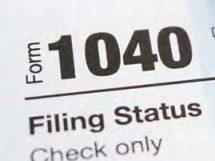
When you hear the term “free roaming,” a vision of herds of buffaloes thundering across the Great Plains or wild ponies galloping the beaches of Chincoteague and Assateague Islands off Virginia’s eastern shore may come to mind. But did you know that Eastern Kentucky’s Appalachian Mountains are home to free-roaming horse herds so large that an organization has been created to care for them?
These free roaming steeds mainly wander nine counties in the area: Breathitt, Knott, Perry, Magoffin, Martin, Floyd, Pike, Leslie and Harlan, with a few making it into Letcher and Clay counties. However, the largest herd is in Breathitt County, where herds can be found within a short drive of Jackson, the county seat.
Since 2014, volunteers have been photo documenting most of the herds and have inventoried more than 500 horses in the nine-county area.
Enter the Appalachian Horse Project (AHP), a nonprofit 501(3)c volunteer organization that partners with Eastern Kentucky officials, landowners, horsemen and animal lovers to ensure that the traditional practice of allowing horses to roam free in the mountain counties continues in a responsible way. Any herds of unowned horses are managed to a healthy, sustainable level, while unhealthy individuals are culled. Surprisingly, free-roaming horses appear to be doing better than some of their fellow animals kept in stalls or in small, enclosed paddocks with limited feed. The occasional underweight horse often reflects an owner that could no longer afford to feed it and has recently turned it out, or the animal is quite old and unable to chew the grasses or hay provided.
Even though the herds appear to have no owners, many of the horses are owned by locals who check on them regularly, though some were abandoned after the 2008 recession. Any horse pastured in these hills is free to roam wherever it likes. This practice began years ago because there’s little flat land in the mountains and very little pasture. After a coal company has finished working a tract of land, the company must “reclaim” it to get back bond money put on the property, so the land would be reseeded, creating a perfect environment for horses. However, the companies were having a hard time getting their money back because horses were grazing it down to the dirt, and they were having a hard time proving the land had been reclaimed.
Initially by gentlemen’s agreement, locals would only use this pasture for grazing mares and geldings (castrated males), turning them “out to pasture” on the flat terrain in the spring and bringing them up in the fall. The fact that no one allowed stallions to roam free was an unspoken rule. Once a male foal grew into stallion hood, owners would take him home. But with the economic downturn, the coal industry declined. People couldn’t afford to keep and feed horses at home. So, the number of horses living on the reclaimed property increased. Stallions would breed mares, creating foals, and causing a big challenge for AHP: overpopulation. Unchecked, the growing equine population could become a real concern. Reducing the stallion population is a current goal.
To establish numerical equilibrium in the area, the AHP—in partnership with the Kentucky Horse Council, the University of Kentucky and local veterinarians—has sponsored gelding clinics in the region to decrease the number of stallions. In addition, local horse owners are getting involved, to ensure that none of their stallions are allowed to roam free, which in turn should slow the growing equine population.
 Another issue in wintertime is that herds often go onto roads to lick the salt put on the asphalt to melt ice and snow off the pavement. Both horses and car drivers are in danger. Anyone who leaves their vehicles too long may return to find the paint licked off, the bumpers and tires with bites taken out of them, or side mirrors used as scratching posts.
Another issue in wintertime is that herds often go onto roads to lick the salt put on the asphalt to melt ice and snow off the pavement. Both horses and car drivers are in danger. Anyone who leaves their vehicles too long may return to find the paint licked off, the bumpers and tires with bites taken out of them, or side mirrors used as scratching posts.
Now in the cold months, AHP volunteers put in hay and salt through the winter, and make sure the horses are wormed.
In addition to the fact that the horses are looked after, the AHP creates jobs by offering horse tours, equine therapy (for people), and equine job preparation.
Reserving a two- to three-hour tour for visitors is easy. Just call the number below for info and to make a reservation. You’ll meet the tour vehicle (which is suited for both paved and dirt mountain roads) just outside Jackson, Kentucky, and drive for about 30 minutes in that vehicle to meet a herd. The scenic road up the mountain winds along a lovely, rushing stream and through small communities. Along the way, your guide will tell you the area’s history and culture and what coal mining meant to those communities. The guide will point out family cemeteries, an old schoolhouse, and a swinging bridge. You’ll travel coal haul roads that meander through the hills and learn about how these horses came to be here.
At first glance, the critters may appear wild. But when you step out of the vehicle, a number will most likely amble up to you. In many cases the animals are owned or have contact with folks who come up the mountain to watch the herds and bring them hay and such treats as apples, corn and carrots. Photos are encouraged!
The opportunity to be with horses, who seem to look into your soul and will mimic your fears as well as your trust, has been proven to make a substantial difference in many lives.
AHP’s future plans to contribute to community health with its equine therapy programs include:
- Individuals struggling with substance abuse, particularly with opioid addiction.
- Veterans and others who are experiencing PTSD.
- At-risk youth who have struggled with school and family relationships.
- Seniors who are isolated and may benefit from horse-human connections.
- Physically and emotionally challenged individuals.
For further information on the free-roaming horses in the Kentucky mountains and the Appalachian Horse Project, visit appalachianhorseproject.org or call (800) 674-4494.
You can also assist with the program. Your tax-deductible donations and AHP membership can make a difference in the lives of these horses…and in yours. See the website for details.





